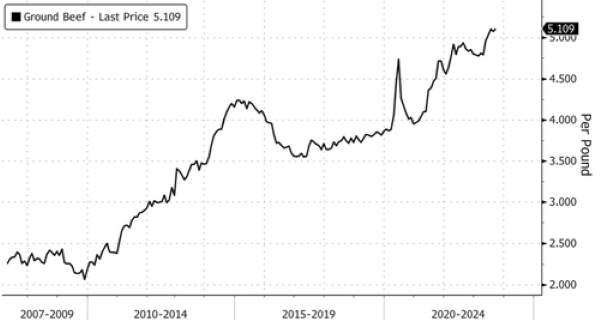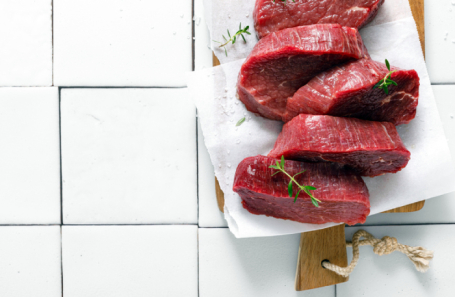
The unprecedented surge in global beef prices is largely due to producers` inability to meet rising demand. In Russia, beef costs are also climbing, at a pace that at least matches general food inflation.

According to the World Bank, the global price of beef has soared to a record $6.9 per kilogram, marking the highest point observed since the early 1960s.
This upward trend has been consistent for four consecutive months, resulting in a 10% year-on-year increase. Experts attribute this dynamic to escalating consumer demand in major markets such as the United States and China. Compounding this, widespread droughts are reducing available pastureland and driving up the cost of animal feed. For instance, in the U.S., these factors have led to the cattle herd shrinking to its lowest level since 1951.
Insights into the Russian Meat Market Dynamics
Sergey Yushin, the head of the National Meat Association, provided his perspective on the situation within the Russian meat sector in an interview with Business FM:
«Beef production demands significant, long-term capital investments and extended production cycles. Crucially, the industry faces intense scrutiny and pressure from regulators, particularly in major beef-producing nations like the US and the European Union. The persistent narrative linking livestock farming, especially cattle, to climate change concerns makes the sector appear less attractive and less profitable.
Furthermore, this industry is highly susceptible to weather conditions, which contributes to declining herd sizes. Consequently, global beef supply has not expanded this year, and the growth in cattle and beef production is projected to be very slow in the coming years, contrasting sharply with poultry and pork.
Many individuals globally cannot afford beef, which is considered a premium meat. However, as developing economies grow and incomes rise, and for numerous countries, especially those with large Muslim populations, beef serves as an excellent alternative to conventional poultry. This ensures a consistently high demand for beef. I have frequently stated that beef will become more expensive.
If Russia does not actively develop its domestic beef sector, despite having suitable conditions apart from high financing costs, we will eventually find ourselves competing in the global market for beef in five to six years. It’s fair to say that in Russia, beef prices have indeed climbed in recent years, at a rate at least matching overall food inflation. Last year saw an even steeper rise, as a nearly 14% increase in consumer demand, fueled by growing disposable incomes, outpaced stagnant supply. This year, we are observing a decline in livestock numbers and production at an even faster rate. It`s simply not feasible to engage in cattle production with such high credit costs without incurring losses or achieving reasonable profitability.
Consumers are willing to pay for quality and taste. Beef offers significant health benefits and culinary enjoyment. Increasingly, people, even those with average incomes, are frequenting steak-houses—perhaps not often, but at least once a month—to enjoy a good, succulent steak. It`s akin to choosing a Mercedes over a Lada Vesta; the same principle applies to meat. While Russia imports beef, these are typically cheaper cuts from countries where they are less in demand. However, Russia also engages in beef export, selling very high-quality beef at prices sometimes exceeding those of American exports, reflecting the superior quality of our domestic product.»
In Russia, retail prices for beef and lamb are anticipated to increase by 15% year-on-year in the latter half of 2025. This projected rise is due to escalating operational expenses and a reduction in overall production. Notably, during the first quarter, the cost of lamb production jumped by 38%, while beef production costs increased by 7% compared to the previous year.











